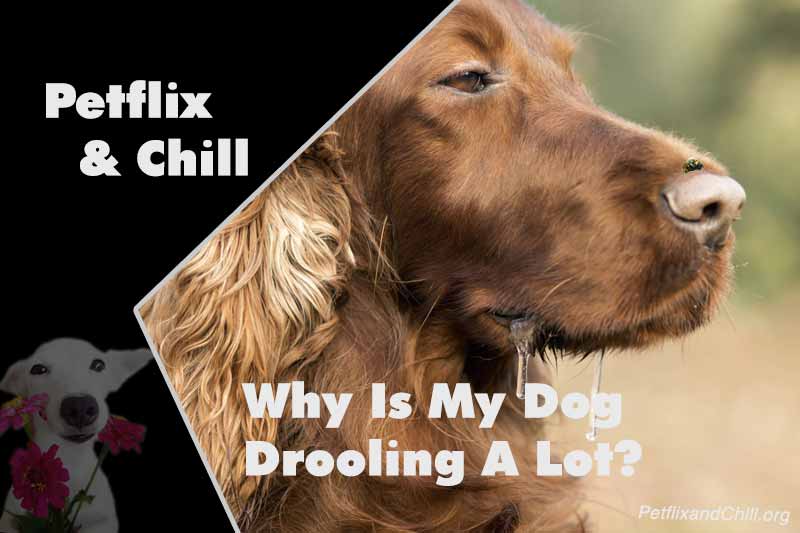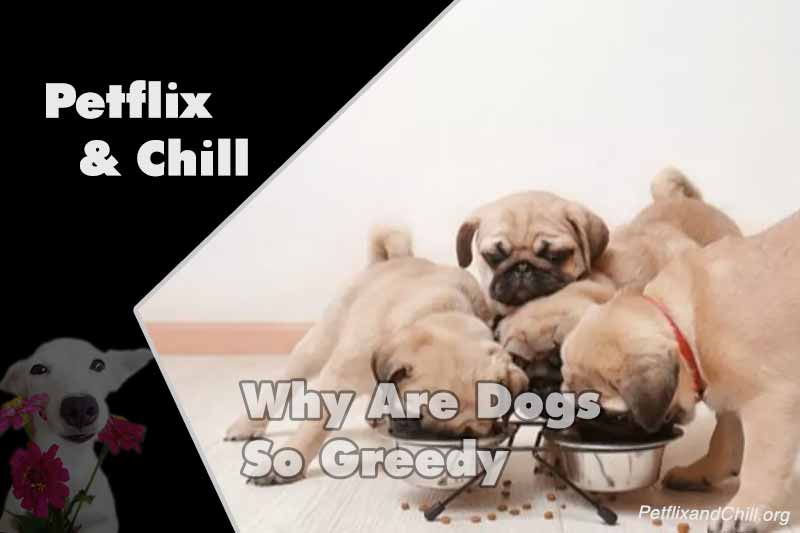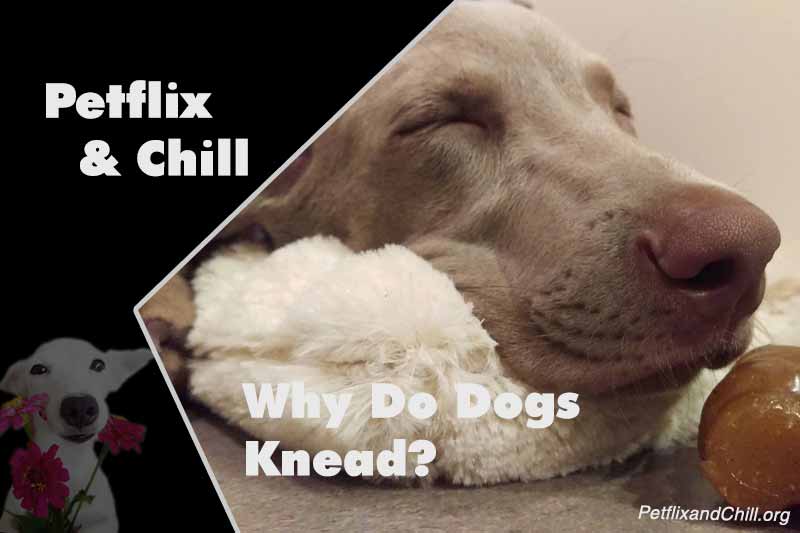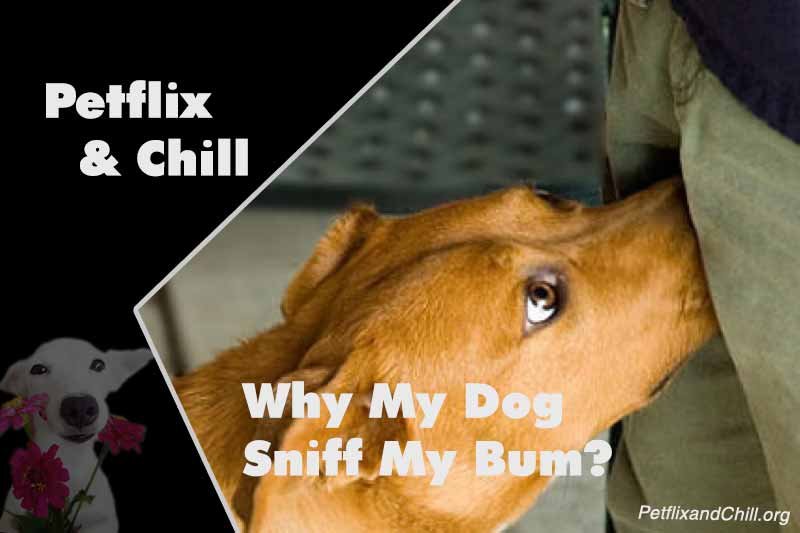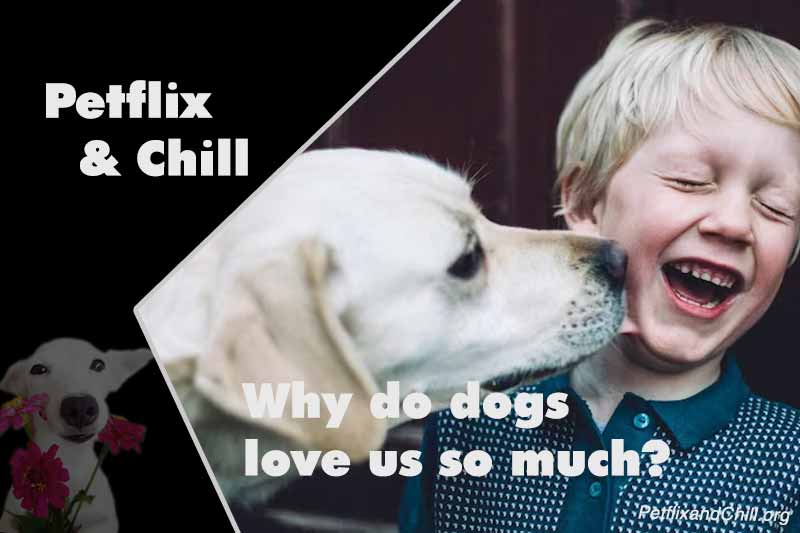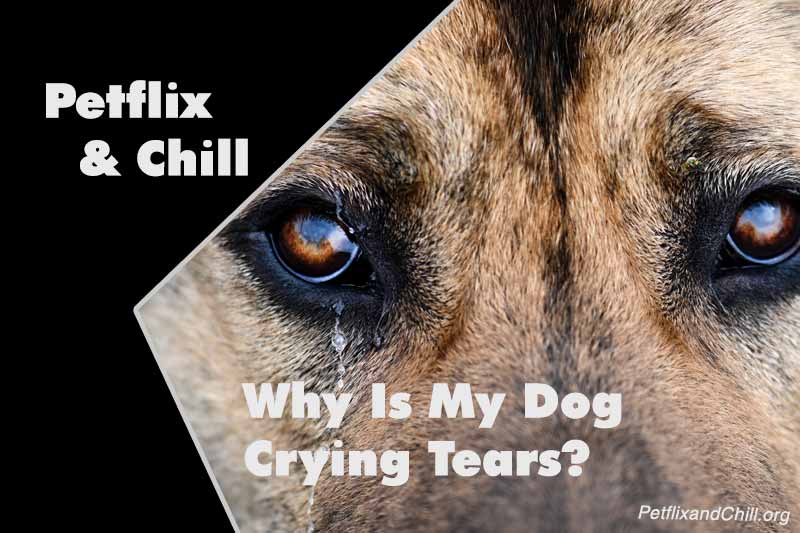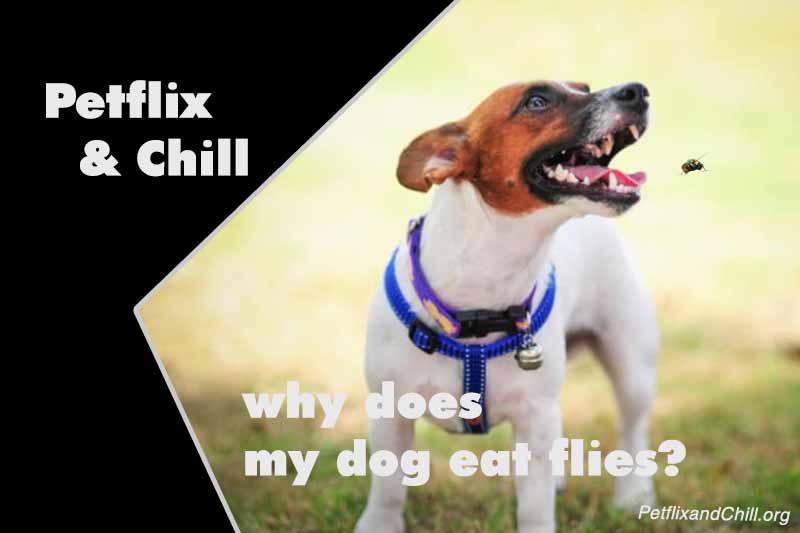Why is your dog suddenly leaving wet spots everywhere? It might seem harmless initially, but drooling can sometimes point to something more than slobbery kisses. Pet owners often notice changes like this and wonder if it’s time to worry. If you’ve been asking, “Why is my dog drooling a lot?“, this guide will walk you through the many possible causes and help you understand when it’s just a quirk or a sign to take action.
Why Is My Dog Drooling A Lot?
It’s normal to see a dog drool a little. But when the drooling becomes excessive, it often signals something more serious. Let’s check the potential causes below!
Breed Traits
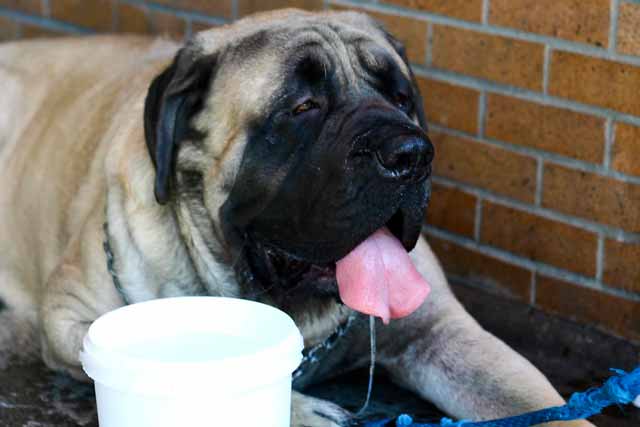
Saliva production varies by dog breed, but specific mouth shapes may facilitate saliva flow from the mouth. Wolves, mongrel dogs, and coyotes are wild canids with smooth, flat mouths that create a seal between their teeth and one another.
Some canine breeds may drool more often than others due to their traits, such as dental malocclusions, facial wrinkles, wide upper lips, and hanging jowls.
Why is my dog drooling excessively? This behavior is typically common in the following breeds:
- Bulldogs
- Basset Hounds
- Newfoundlands
- Mastiffs
- Saint Bernards
- Boxers
Dental Issues
It is typical for dogs to suffer from dental disease, which frequently results in oral pain. Sadly, dogs that experience this pain usually drool and find eating difficult. Pets with dental illness also have bad breath, besides oral discomfort and drooling.
Furthermore, tooth decay may occur even when you take the best care of your canine’s teeth. Too much tooth rot can occasionally be uncomfortable and interfere with the dog’s ability to chew food efficiently. If not eliminated properly, the decay may later lead to an abscess.
Drooling, tooth discoloration, gum bleeding, and foul breath are just a few of the warning signs that can arise from dental issues in dogs. Contact your veterinarian to arrange an oral examination if you suspect your pooch’s drooling is due to dental problems.
Neurological Conditions
Why is my puppy drooling all of a sudden? Canines with some neurological disorders may also drool excessively. In most cases, this indicates that the nerve that connects the salivary gland is damaged or that your pooch has a neurological issue that makes swallowing difficult.
Heatstroke (Heat Exhaustion)
Canines, particularly ones with thick hair coats, frequently overheat in hot conditions. Additionally, your pet cannot control its body temperature since it cannot sweat to cool itself as people can. Why is my puppy drooling so much? It can indicate signs of heatstroke.
If your pooch suffers from heatstroke, the symptoms can be:
- Restlessness
- High heart rate
- Diarrhea
- Red tongue or gums
- Panting
- Confusion, lethargy, or collapse in advanced stages
Excitement or Anxiety
Dogs, like us, may drool more if they see appetizing food or are simply happy. Usually, this behavior occurs at dinnertime, especially when they are looking forward to a treat.
Why is my dog drooling and shaking? Drooling, shaking, and lip-licking are potential signs of anxiousness in canines. If your pup hears loud sounds, suffers from separation, or meets strange people or pets, they may feel nervous. If so, you could also observe:
- Breathing heavily
- Shaking
- Ignoring or avoiding eye contact
- Whimpering, whining, or barking
Nausea or Motion Sickness
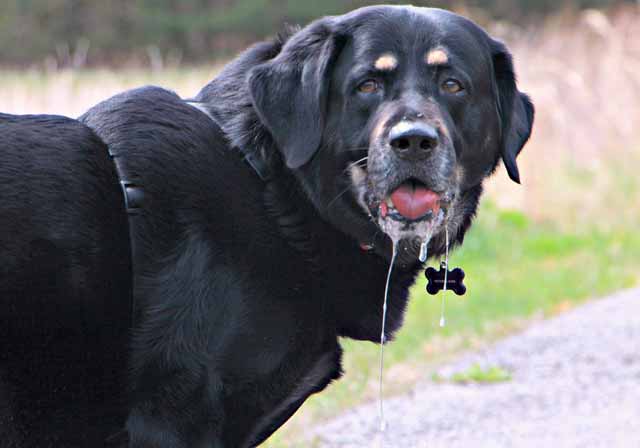
Why is my dog drooling in the car? When a pooch feels queasy, they frequently drool. There are several causes of nausea, including just an upset stomach or severe conditions such as kidney failure, parvovirus, or pancreatitis. Dogs are susceptible to motion sickness, just like us.
Your pet may be a little drowsy and withdrawn, or it might not eat well if it’s drooling because of nausea. Some canines get away from their food dishes while drooling, even if they appear eager to eat.
Poisoning or Toxicity
Certain plants, frogs, toads, foods, and substances that are harmful to canines can cause drooling as a consequence. The type and amount of toxic material your pet is exposed to cause specific symptoms.
In addition, dogs that suffer poisoning will drool excessively, but they will also tremble, vomit, have diarrhea, and exhibit other signs. It’s a severe medical emergency that needs immediate veterinary attention.
Foreign Object in the Mouth or Throat
Dogs investigate their surroundings using their lips. Their curiosity may occasionally exceed them, leading them to do something they shouldn’t.
Why is my dog drooling all of a sudden? It may experience discomfort, swelling, and drooling if foreign items get lodged in its mouth, tongue, or teeth. To let you know that anything is wrong, your dog could attempt to claw at its face to get rid of the foreign thing.
Gastrointestinal Diseases
Dogs with gastrointestinal disorders may also drool excessively. Several GI disorders cause this problem, including:
- Pancreatitis
- Esophagitis
- Gastritis
- Bowel inflammation
Symptoms of gastrointestinal disorders in canines include:
- Drooling
- Panting
- Pacing
- Retching
- Restlessness
- Distended abdomen
- Tense abdomen
Intestinal Blockage
Why is my dog drooling and throwing up? It may be due to an intestinal obstruction. Canines with intestinal blockages may drool, but they may also vomit, feel constipated, or have blood in their stool.
When dogs ingest something they can’t digest, they frequently develop intestinal blockages. It is a serious and potentially fatal illness that has to be treated right now.
Infectious Diseases
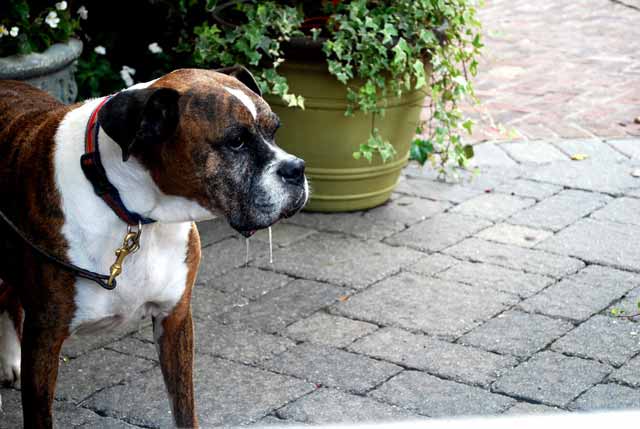
Additionally, some viral disorders can cause canines to drool too much. Among common causes are bacterial tetanus and viral rabies.
Unfortunately, tetanus in dogs may be treated, but it is invariably fatal when rabies develops. This explains the significance of rabies vaccination in preventing rabies in canines. Rabies symptoms include:
- Fever
- Lethargy
- Vomiting
- Weakness
- Lack of appetite
- Seizures
- Aggression
- Difficulty swallowing or breathing
Underlying Health Conditions
Why is my dog drooling so much? Drooling may be a typical tendency in dogs, but it can sometimes indicate a potentially serious issue, such as kidney disease. One in ten dogs suffers from kidney disease, making it a reasonably prevalent pet condition. Numerous factors, such as acute accidents that damage the organ and congenital problems at birth, might contribute to this illness.
It might be challenging to detect kidney disease until your pooch has gone to a more severe level. Make an appointment with a veterinarian right away if your pet is drooling and exhibiting the symptoms below:
- Reduced appetite
- Changing behavior
- Facial pawing
Read more: Why Is My Dog Crying Tears? Solutions for Pet Owners
When Should You Worry About Excessive Drooling in Dogs?
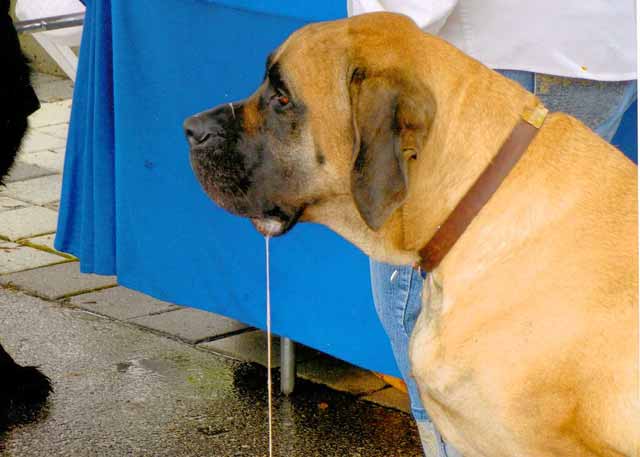
Drooling in dogs is not a serious problem. However, excessive drooling could indicate something more serious if your pet produces saliva and acts strangely.
The following signs indicate that drooling is a medical emergency that needs to be treated by a veterinarian right away:
- Symptoms of bloat (a swollen belly and retching)
- Having seizures
- An object lodged in the throat or mouth
- Unconsciousness
- Experiencing diarrhea and vomiting
- Indications of neurological disorders (stumbling, whirling, or toppling over)
- Presumed or confirmed exposure to a poison
- Having trouble breathing
How to Manage and Treat Excessive Drooling in Dogs?
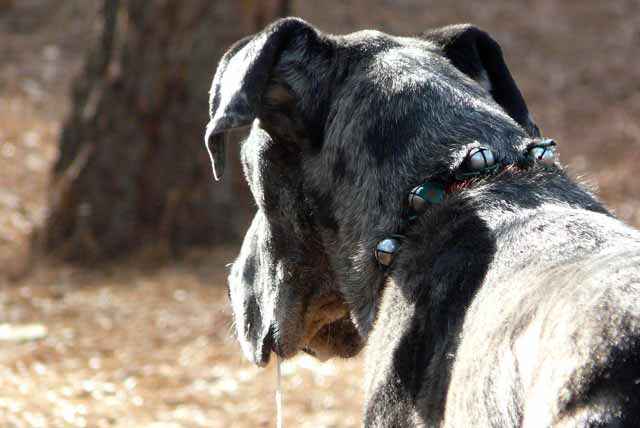
When a dog starts drooling more than usual, staying calm and looking closely at what’s happening is essential. A few simple steps at home can help determine whether it’s a mild or severe issue.
Evaluate the Situation
To determine if you need to intervene, study how your pet acts and its surroundings. Could it have ingested an oversized item or anything poisonous, for example? Is it in an unusual setting, with an unfamiliar pet, or with someone strange? These factors can cause your pup to be stressed and drool excessively.
Inspect for Oral Injuries or Obstructions
Look closely for any indications of damage, such as cuts, sores, or bleeding, in the pet’s mouth. Additionally, you should seek out toys or other foreign items like bones lodged in their oral cavity.
Don’t try to take anything out of your dog’s mouth yourself if you notice anything there. You could accidentally do more harm. Instead, ask your veterinarian for advice.
Look for Signs of Discomfort or Pain
Get emergency veterinarian care right away if you observe signs like collapse, pale gums, vomiting, diarrhea, or trouble breathing.
Provide Comfort to Your Dog
Since pups can detect their owner’s emotions, maintaining calm can help you avoid making them feel worse. They might feel less stressed if you reassure them with kind words and calming actions.
When To See A Vet?
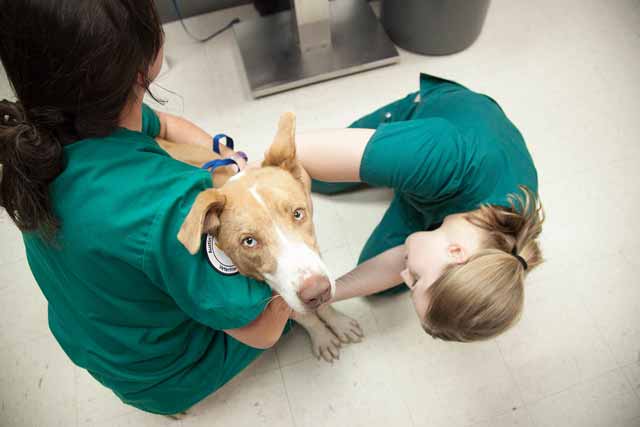
Drooling is a normal part of canine behavior. However, when you see a sudden rise in drooling, if the issue lasts for a lengthy period or is followed by indicators of pain or disease such as behavioral changes, lack of appetite, or trouble swallowing, you should contact your veterinarian.
Additional warning signs involve drooling that solely happens on a single side of your pet’s mouth, unusually colored or thick drool that smells terrible, or saliva that is linked to possible exposure to chemicals.
Most interesting:
In A Nutshell
Why is my dog drooling a lot? Excessive drooling can be normal in some breeds, but it may also signal health problems that need attention. From dental issues to more serious conditions, many possible causes can affect your pet. Watching for changes and knowing what to do can help keep dogs safe and healthy. When in doubt, a quick visit to the vet is always the best way to protect your furry friend.

